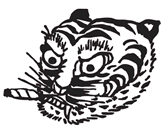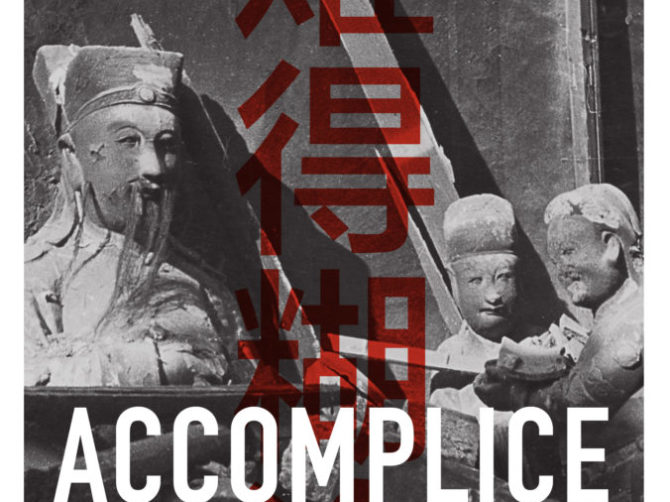Last week, we published Accomplice to Memory, a brand new experimental memoir from author Q.M. Zhang. Check out this interview between Zhang and Kaya Press in which the writer discusses the book’s structure, her writing process, her relationship with her father and her heritage, and much more.
Kaya Press: Accomplice to Memory defies genre—it is simultaneously straightforward memoir and experimental fiction. How did you balance telling the biographical story of your father’s immigration from China to America after the Communist Revolution with the fictional embellishments?
Q.M. Zhang: The hybrid form of the book emerged out of necessity. Before my father opened the secret that is at the heart of the book, I had been writing in a fairly straightforward memoir style about the stories he’d been telling over years of interviewing him. I was also trying to write about my own memories of growing up in a mixed Chinese American family and my turbulent relationship with my father. After my father opened the secret, there was no longer any “biographical story” I could rely on. I turned to fiction because now it was impossible to know what parts of his stories actually happened and what he made up, especially after his fall. So I invented fictional names for both of us and started writing in the third person. Later, I dropped the names and just referred to the characters as the Father and the Daughter, which gave me needed distance to explore their relationship. I began to write what was essentially a fiction within a fiction: a story about a daughter’s desire to know her immigrant father, and the stories she is writing about an imagined father character named Wang Kun as he makes his way out of war torn China. I revisited the form of memoir after getting feedback from several fellow writers, who helped me to see that the tension between the two narrative structures—the father-daughter story told in the present tense and the Wang Kun story told in the historical past—was essential to the “truth” of the larger story I was trying to tell. Rather than try to strike a “balance” between the two structures, I needed to draw a sharper contrast between them: between what the daughter is able to know and what she has to imagine. I discovered that I could do this more effectively if the father-daughter story was told in the first person. The resulting juxtaposition of memoir and fiction, research and imagination, allowed me to get closer to a kind of reflexive truth telling that only a hybrid form such as this makes possible.
KP: On the surface Accomplice to Memory is your father’s story, but it is just as much about your life and your relationship with your father. How did writing this book impact that parental relationship?
Zhang: Accomplice to Memory is not my father’s story. It’s the story of a daughter’s desire to know her father and the limits of knowing, particularly within a mixed immigrant family. As depicted in the book, my efforts to know and write about my father affected our relationship, bringing us together in a kind of mutual struggle—for understanding, redemption, love—during the final years of his life. Paradoxically, the book became our shared obsession as we both felt the press of time and the urgency of the project. Although my father did not live to see its completion, in the end he was my collaborator in writing the past.
KP: One of the unique aspects of Accomplice to Memory is the integration of both personal and archival photographs into the text. Why did you want to use these photographs?
Zhang: The roughly 140 images in the book constitute a third narrative structure that came to be as a result of my research into civil and world wars in China during the 1930s & 40s. When I discovered the existence of extensive visual documentation of times, places, and events that my father had lived through, these images began to infiltrate my writing. While the photographs failed to elicit my father’s memory, they filled in holes in his stories and sparked my imagination, becoming accomplices to my own storytelling. All the images in the book were chosen for their relative historical correspondence to the places and times in which the stories occur. Originally made for documentary purposes, the images serve as evidence of that which cannot be documented: memories, dreams and hallucinations, the forgotten and the repressed, the imagined and the invented. While some photographs are used in a more conventional biographical sense, others function as pseudo-illustrations of a fictive story, inviting the reader to consider their position and meaning in relation to the text (including the images placed at the beginning of chapters).
Some images are used to reveal my unconventional research process, as I search for traces of my father in dreams and hallucinations as well as historical documents and photographs. The recurrence and cropping of certain images—e.g., a man in suit and Fedora standing in the midst of chaos—suggests that I may be increasingly lost in an imagined world of my own and my father’s joint making. In sum, the images are intended to work at a slant to the text, blurring the boundaries between memoir and fiction and calling into question the veracity of the stories told.
KP: The text is preceded by an epigraph from T.S. Eliot and Cao Xueqin. Please discuss the significance of these quotes and your relationship with these writers’ work.
Zhang: Cao Xueqin was an 18th century Chinese writer while T.S. Eliot was a 20th century American-born British writer, so there’s considerable historical and cultural distance between them! And that’s partly why I begin the book with these two quotes, as bookends to my father’s life as well as to my own storytelling, both of us moving back and forth between China and the U.S., past and present, the classical and the vernacular. My father was educated in both worlds. He knew and loved both writers and it was through him that I was introduced to their work. While the two books from which the epigraphs were chosen couldn’t be more different in form and content, I find a connection in their epistemology or way of knowing about the world. Both highlight the limits of human knowledge and the imperfect tools—prayer, observance, making a mark on the side of a boat—with which we must approach the difficult but necessary work of truth telling.
KP: In Accomplice to Memory you discuss your experience growing-up Chinese American in the 1960s. How has your relationship with your Chinese heritage changed since then?
Zhang: Not surprisingly, my changing sense of what it means to be Chinese American parallels the shifting relationship between the U.S. and China over the last half century. I was born and grew up in the midst of the Cold War and Red Peril.
In this hostile climate in the U.S., China was a one-dimensional surface on which the only palatable projections were the non-threatening orientalist caricatures that I watched my father perform and which I now understand as necessary for his survival. My way of surviving was to try to distance myself from all things Chinese—including my father. As a child of a so-called “mixed-race” marriage, I sought refuge in whiteness. When relations between the two countries “normalized,” I began the painful process (familiar to many second gen-ers) of trying to reclaim what I had previously denied. This often took the superficial form of cultural consumption of what I call “Chinese kitsch”. But I also had deeper questions about history, both familial and national, that took me to China and Hong Kong, first as a student and later as a teacher—just as Chinese students were flocking to the U.S. in growing numbers. Being Chinese American during this period of my life was thus something I had to work at.
I don’t think it merely coincidence that my father chose to open the secret at a time when China was emerging as a global economic power. At that time, after two decades of shuttling back and forth between China and the U.S., I thought I had finally learned to see from both perspectives at once. I thought I had arrived at a sense of peace with my hybrid identity as a Chinese American.
For the first time, I viewed these two parts of myself as equals. But the decade-long process of researching and writing this book has shifted my relationship to my heritage once again, reminding me how little we know about our own families, how easy it is fall back on cultural stereotype as an explanation for more complicated realities, and how necessary it is to really talk to our parents while they are alive.
Did your position as a cultural psychology professor influence your process in writing Accomplice to Memory?
Social scientists are nonfiction writers who are concerned with truth telling, albeit using different tools than the novelist. I was trained in the tools of anthropology and psychology: interviewing, participant observation, disciplined documentation. These are powerful methodologies, but there is a certain hubris to they way they are wielded in the world. After years of interviewing my father, his revelation shattered everything I thought I knew—about him, my family history, my self—and I suddenly felt as if all this time I had been making Xs on the side of a boat. I needed a new set of tools.


Leave a Comment
We'd love to know what you think.